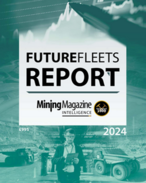Strong demand from China’s property construction/steel recovery drove hard coking coal rebound for the June quarter, though not as much as iron ore.
However, the bank forecasts contract prices for metallurgical coal to decline in coming quarters as conditions in China’s steel industry soften.
However, the bank conceded in its latest Minerals & Energy Outlook that the “inherent uncertainty” around the duration of the construction-led rebound in China’s economy added some upside risk to its forecasts.
NAB expects the contract price to drop to $US85/tonne in the fourth quarter and average $84.25/t next year.
Australian metallurgical coal exports grew modestly in the first four months of 2016 – up by 1.4% to 59.4 million tonnes, driven by larger volumes to China, which increased by over 19% year-on-year, while exports to other markets fell by 2.4% yoy over that period.
The Asia Clear Australian contract drifted near or below $75/t between mid-November 2015 through to early March 2016, before pushing back closer to $100/t in late April, since which time prices have subsequently retreated, settling around the $90/t range from late-May onwards.
NAB said higher spot prices have followed through into benchmark quarterly contract prices, which were recently settled at $92.50/t for Q3, up from $84/t in the June quarter.
That said, media reports suggest that the quarterly contract framework – which has been the primary price setting mechanism for metallurgical coal since annual contracts were abandoned in 2010 – may soon come to an end.
Anglo American, which has led contract negotiations on the supply side, is selling its key Queensland coal mines and as yet no producer has assumed their negotiation role, NAB noted.
“China’s metallurgical coal imports accelerated from March onwards, reversing a declining trend from the past two years,” NAB said.
Over the first five months of 2016, China’s metallurgical coal imports totalled 21.2Mt – an increase of 28% yoy.
“Domestic coal provides the bulk of China’s steel industry requirements; however the share has declined in early 2016, down to 90.3% in the first five months of the year from 92.8% in the same period of 2015,” NAB said.
According to Platts, authorities in China’s main coal producing regions have restricted domestic production, limiting mining to 276 days a year (from 330 days previously) – increasing China’s import requirements.
























